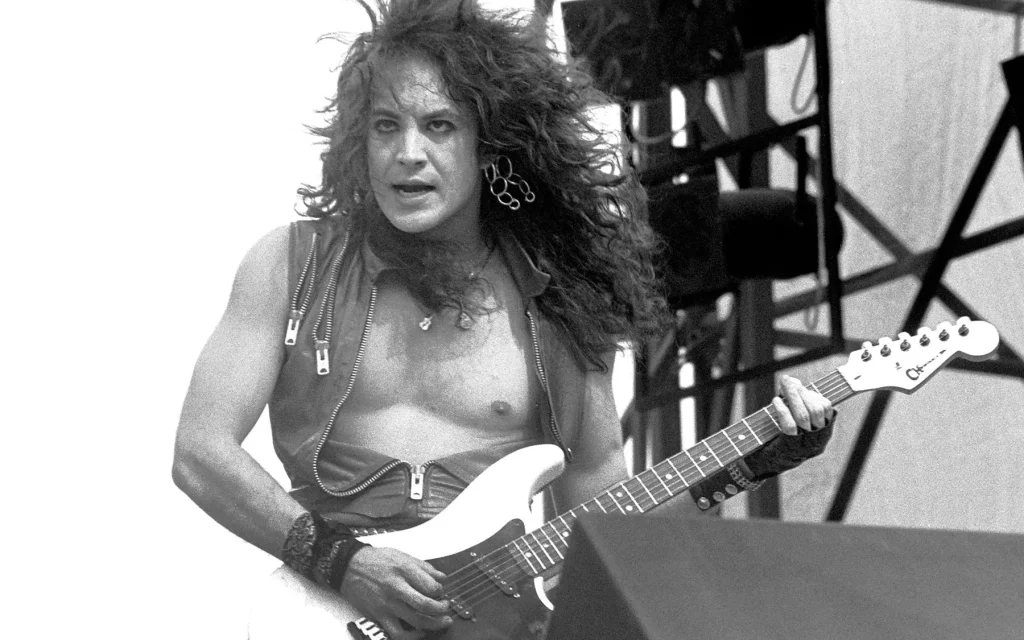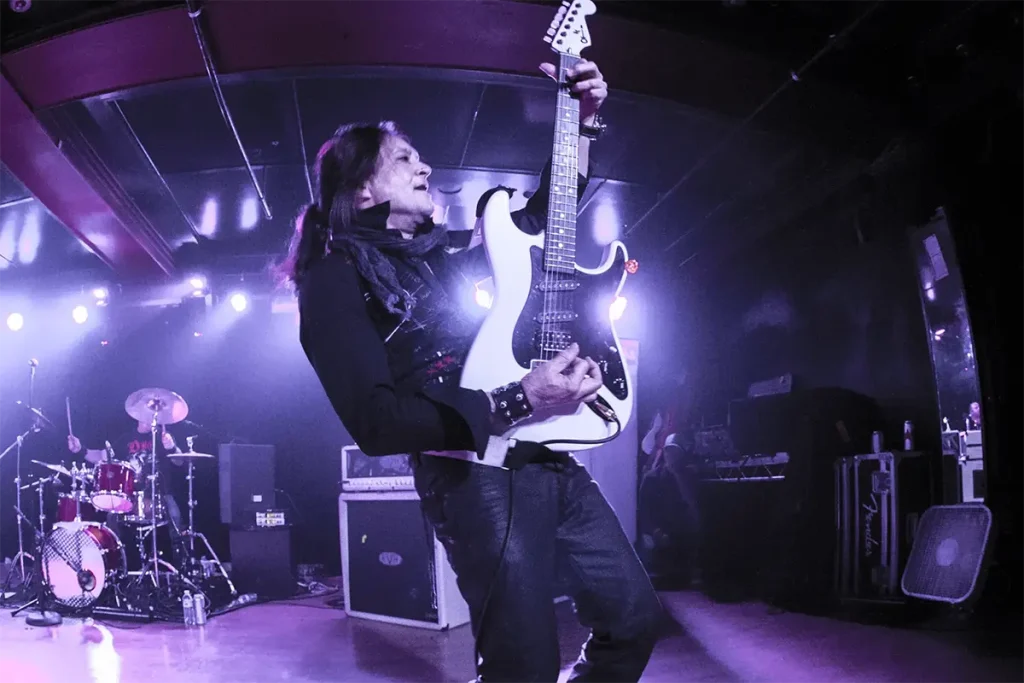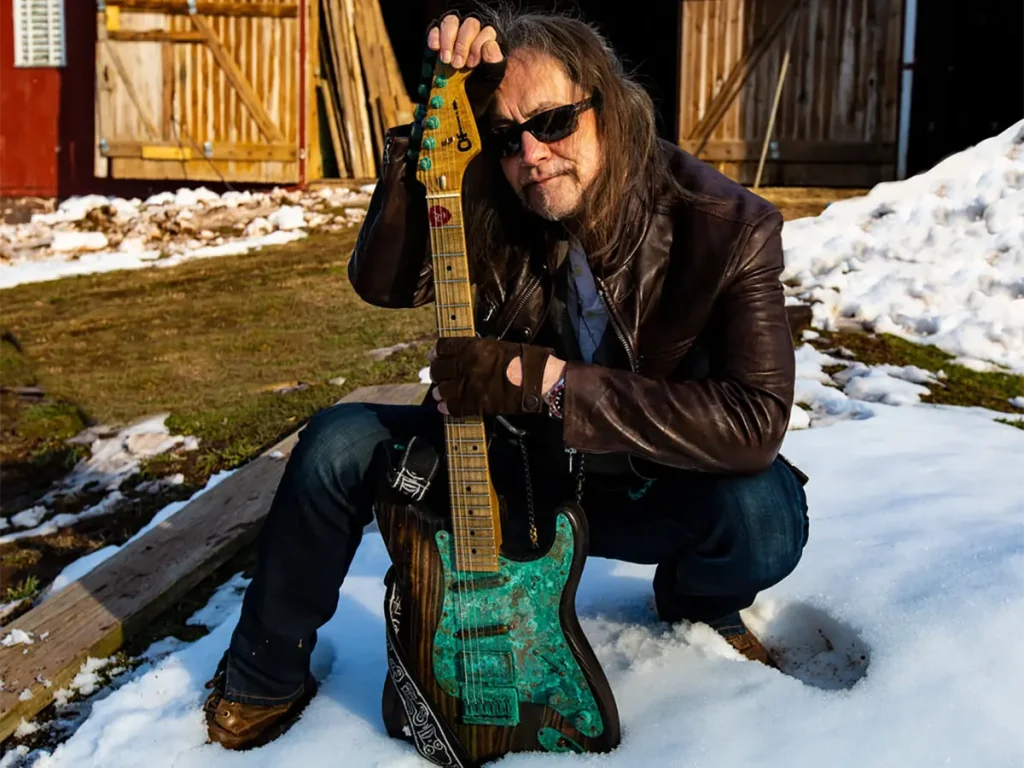Picture an alternate universe where Jake E. Lee quietly held down the low end in Ozzy Osbourne’s band instead of rewriting the singer’s entire guitar legacy. He never actually took the bass gig, but he came frighteningly close to being buried in the rhythm section instead of leading it.
Instead, Lee became the secret architect of Ozzy’s 80s sound, then walked away to chase raw blues and stubbornly old school rock on his own terms. His career is a masterclass in how to be indispensable on record, disposable to management, and unforgettable to anyone really listening.
From LA clubs to Ozzy’s poisoned chalice
By the early 80s, Jake E. Lee had already done his time on the Sunset Strip, grinding it out in Mickey Ratt (pre Ratt), Rough Cutt and even a short-lived stint with Dio. That combination of flash and bluesy phrasing caught a lot of ears, including those in Ozzy Osbourne’s camp when they needed a new guitarist after Randy Rhoads and the stopgap Brad Gillis era.
Los Angeles bassist and fixer Dana Strum recommended Lee to Ozzy, and the audition process quickly turned into a metal bloodsport. Ozzy was torn between Lee and George Lynch of Dokken, reportedly choosing Lynch first before changing his mind and making Jake call Lynch to tell him he was out. That is the level of casual cruelty Lee walked into before he had even played a proper gig.
When he finally hit the road with Ozzy, he stepped straight into a hurricane of grief and hero worship. Lee later recalled dealing with fans screaming “Randy rules, you suck” from the crowd while he was trying to keep the show on the rails, a baptism of fire that gave him the thickest skin of any 80s guitar hero.
Around the same time, Ozzy’s camp was auditioning bassists for what would become The Ultimate Sin. Greg Chaisson remembers spending three weeks in Scotland auditioning, bonding with Lee, impressing Ozzy with his 70s-influenced bass parts and still being rejected because the singer hated his look, joking that he resembled Charles Bronson in The Mechanic. Chaisson never got the bass job, but he and Lee would soon weaponize that chemistry in Badlands.

Bark at the Moon – the hit he did not own
On Bark at the Moon, Lee did far more than just replace Randy Rhoads. Working closely with bassist and lyricist Bob Daisley, he says he wrote the bulk of the album’s music, including the title track that would define Ozzy’s 80s reinvention.
Then came the paperwork. After tracking his parts, Lee was handed a contract that credited Ozzy as sole songwriter and stripped him of publishing and even the right to publicly say he had written anything. When he balked, Sharon Osbourne allegedly told him to sign or go home and sue while they kept his tracks and simply brought in another guitarist to overdub them. Faced with the prospect of being erased from a finished album, he signed, later calling the whole thing “just mean” rather than merely unfair.
The record went platinum and beyond, but Lee saw none of the songwriting money. What he did keep was the lesson. He has said he would only return for the follow up if his writing credit and publishing for the next album, The Ultimate Sin, were guaranteed in a proper contract from the start.
Musically, his fingerprints are all over Bark at the Moon: tightly wound riffs, oddball chord voicings and a ferocious right hand that gave Ozzy’s sound a new, snarling edge. Guitar writers later singled out his staccato, double-picked riffing on tracks like “Waiting for Darkness” as a signature move that set him apart from the more classical sweep of Rhoads or the pentatonic bluster of Zakk Wylde.
The Ultimate Sin – platinum success, poisonous politics
By the time Ozzy emerged from rehab to start work on The Ultimate Sin, Lee had quietly built his own mini studio. Armed with a drum machine, a cheap Charvel bass and a portable recorder, he demoed complete songs at home, writing riffs, verse and chorus structures, solo sections and the bass and drum parts he heard in his head. He estimated later that roughly half of those fully formed ideas ended up on the finished album.
The result was a slick, heavy record full of Lee’s DNA, from the hulking title track to the haunting “Killer of Giants”. Yet behind the scenes he was getting bored with writing inside a narrow “it has to be metal” box and felt the musical parameters tightening just as the production became more MTV friendly. It did not help that he never really clicked with Ozzy on a personal level and was clashing with new bassist Phil Soussan, who, according to Lee, was lobbying hard to become the band’s primary songwriter after the success of “Shot in the Dark”.
Lee believes Soussan was “partly instrumental” in getting him fired, whispering that Ozzy no longer needed him. The irony, as Lee points out, is that he had twice talked Ozzy out of firing Soussan earlier on tour for his onstage antics, only to watch the bassist outlast him by a couple of months before being tossed himself.
The way he actually learned he was out of the band belongs in a black comedy. His roommate, who also worked as his guitar tech, ran into Soussan and drummer Randy Castillo at the Rainbow and was casually told, “So, what are you going to do now that Jake’s out of the band?”. When Lee called Sharon to ask if a weird rumor about him being fired was true, she broke down and admitted it, cheerfully explaining that this was why she had just taken him out to dinner without mentioning it.
Decades later, Lee admitted he felt like a “forgotten footnote” in Ozzy’s story, noting how rarely his era is mentioned in documentaries. It took being invited to play at Ozzy’s retirement event, Back To The Beginning, and feeling genuine respect from everyone involved for him to finally feel that his role in that history had been acknowledged.
Badlands – blues, grit and a buried classic
After Sharon’s phone call, Lee did what every great fired sideman should do: he built his own band and doubled down on what made him dangerous. Badlands paired him with ex Black Sabbath singer Ray Gillen, drummer Eric Singer and that same “too 70s” bassist Greg Chaisson, channeling a heavy, Led Zeppelin flavoured blues rock that owed more to early 70s vinyl than to Aqua Net.
Their 1989 self-titled debut is stacked with songs like “High Wire”, “Dreams in the Dark” and “Winter’s Call”, all of them powered by Lee’s raw tones, Gillen’s banshee voice and a rhythm section that actually swings. Contemporary reviews praised the album’s energy and compared its mix of swagger and melody to bands like Guns N’ Roses and Aerosmith, but with a darker, more muscular edge.
Chaisson has said that what bonded him and Lee was that both came from a 70s school where bass players were allowed to play. Where other LA bands begged him to “just pedal on the A note”, Lee kept asking, “Can you do more in that part?”. Badlands gave him the space to push that philosophy to its limit.
Badlands never got the long career their debut promised, derailed by label politics, changing trends and Gillen’s illness. Their catalog has been mishandled so badly that many fans now hunt down expensive used CDs just to hear those records properly. In the process, some of Lee’s fiercest, most soulful playing ended up effectively buried.

Red Dragon Cartel – the comeback on his own terms
After Badlands imploded, Lee spent years in relative exile, surfacing for a sharp instrumental album (A Fine Pink Mist), a deep cut covers record (Retraced) and scattered guest spots. To casual rock fans, he seemed to have vanished, which only fed his cult status.
He finally roared back in 2014 with Red Dragon Cartel, a new band built in Las Vegas with bassist and producer Ronnie Mancuso and singer Darren James Smith. Their self-titled debut reminded people just how lethal his riffing still was, and set the stage for a more confident second act.
On 2018’s Patina, Lee deliberately shifted away from modern, piecemeal recording. Instead of building tracks around click tracks and guest singers, he took the band into bassist Anthony Esposito’s Obscenic Arts studio, jammed through riffs in the room and built songs as a unit. He describes Patina as more bluesy, more organic and closer to how he worked with Ozzy and Badlands, with material written specifically so the band could play almost the entire record live.
He has been blunt about his mindset. In one interview he said, “Everything I do is old school” and admitted he hates being called a “legacy act”. He still plays loud on stage, does not chase trends and insists he tours to play new music, not to bask in nostalgia or cash in on past glories.
That stubborn streak extends to his old Ozzy material. Lee has said he will not perform those songs with Red Dragon Cartel anymore because it feels dishonest, even though he wrote most of that music. In his view, those songs belong to Ozzy, and the only way he would play them again is if they could work things out and share a stage together.
Tone, health and surviving the madness
For a guy who supposedly “disappeared”, Lee casts a long shadow. Society of Rock has called him “one of the most underrated guitarists in all of rock and roll”, noting how his playing remains both prolific and ferociously dynamic even without constant magazine covers.
Players obsess over how he sounds. Louder’s deep dive on his career points to his love of Tommy Bolin, his early band Teaser (named after Bolin’s solo record) and the way he uses rapid-fire, palm-muted double picking to turn even simple riffs into snarling, percussive hooks. There are plenty of 80s shredders; there are not many who can make a single-note riff feel like a fistfight.
Gear makers have noticed. Friedman built him a signature JEL amp based on the idea of blending the warm, articulate rock tones of the 70s with the more aggressive master volume scream of the 80s. Lee says that amp captures the balance he has always chased: keeping some 70s heart in his sound while adding enough bite to survive in a decade obsessed with more gain and more speed.
The body behind that sound has taken some hits. In recent years, Lee has been dealing with serious wrist problems and talked about being misdiagnosed with carpal tunnel syndrome before deciding to adapt his technique, picking more from the elbow instead of going under the knife immediately. He has said he is playing again and wants to finish the Patina tour and make more music while managing the pain.
As if that were not enough, he was shot multiple times while walking his dog in Las Vegas, in what police described as a random street attack. His management reported that he was conscious in hospital and expected to make a full recovery, an almost absurdly metal twist in a life that already included being fired at the peak of his powers and written out of platinum albums.

Jake E. Lee in three essential eras
| Era | Band / Role | Key records & moments |
|---|---|---|
| 1983 – 1987 | Ozzy Osbourne lead guitarist | Bark at the Moon and The Ultimate Sin – ghostwritten riffs, disputed credits, and some of Ozzy’s most adventurous 80s guitar work. |
| 1988 – early 90s | Badlands founder | Blues-drenched hard rock on Badlands and Voodoo Highway, with “Dreams in the Dark” and “High Wire” showcasing his rawest tones. |
| 2014 onward | Red Dragon Cartel leader | Self-titled debut and Patina reconnect him with heavy, groove-based rock, recorded live in the room instead of to a grid, and released as a modern statement of intent. |
Why his legacy still bites
Jake E. Lee only played on two Ozzy studio albums, but if you strip his songs and riffs out of that catalog, huge chunks of the 80s simply vanish. He was good enough to be cheated, loud enough to be fired, and stubborn enough to walk away rather than spend his life replaying “Bark at the Moon” on cruise ships.
If you want to hear his story without a single word of gossip, just line up the records. Spin Bark at the Moon, follow it with The Ultimate Sin, then drop the needle on Badlands’ debut and Red Dragon Cartel’s Patina. The same raw, expressive player is in all of them, refusing to chase trends, refusing to play nice with contracts, and letting his guitar do the only talking that really lasts.
Ozzy might have almost buried him in the bass slot. Instead, Jake E. Lee became the most dangerous kind of sideman: the one whose riffs outlive the people who tried to erase his name.




